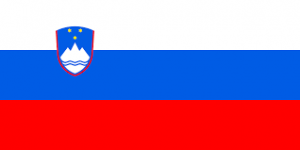Difference between revisions of "Language/Slovenian/Vocabulary/Numbers-1-100"
m (Quick edit) |
m (Quick edit) |
||
| Line 164: | Line 164: | ||
* [[Language/Slovenian/Vocabulary/Days-of-the-Week|Days of the Week]] | * [[Language/Slovenian/Vocabulary/Days-of-the-Week|Days of the Week]] | ||
* [[Language/Slovenian/Vocabulary/Common-Foods|Common Foods]] | * [[Language/Slovenian/Vocabulary/Common-Foods|Common Foods]] | ||
<span class='maj'></span> | |||
==Sources== | |||
* [https://www.lingohut.com/en/v775874/slovenian-lessons-numbers-100-through-1000 Slovenian lessons: Numbers 100 through 1000] | |||
* [https://www.amazon.com/First-Slovenian-Numbers-English-Translations/dp/1092926119 My First Slovenian 1 to 100 Numbers Book with English Translations ...] | |||
{{Slovenian-Page-Bottom}} | {{Slovenian-Page-Bottom}} | ||
Revision as of 22:21, 22 March 2023
Slovenian is a language spoken by around 2.5 million people worldwide. It is the official language of Slovenia and is also spoken in some parts of Italy, Austria, and Hungary. In this lesson, we will learn how to count from 1 to 100 in Slovenian, including cardinal and ordinal numbers.
Cardinal Numbers
Cardinal numbers are used to express the quantity of objects or people, and they are often used in everyday conversations. Here are the numbers from 1 to 20 in Slovenian:
| Slovenian | Pronunciation | English |
|---|---|---|
| ena | /éna/ | one |
| dva | /dvà/ | two |
| tri | /trí/ | three |
| štiri | /štìri/ | four |
| pet | /pèt/ | five |
| šest | /šèst/ | six |
| sedem | /sédem/ | seven |
| osem | /òsem/ | eight |
| devet | /dévet/ | nine |
| deset | /déset/ | ten |
| enajst | /enàyst/ | eleven |
| dvanajst | /dvànayst/ | twelve |
| trinajst | /trìnayst/ | thirteen |
| štirinajst | /štìrinayst/ | fourteen |
| petnajst | /pètnayst/ | fifteen |
| šestnajst | /šèstnayst/ | sixteen |
| sedemnajst | /sédemnayst/ | seventeen |
| osemnajst | /òsemnayst/ | eighteen |
| devetnajst | /dévetnayst/ | nineteen |
| dvajset | /dvàystet/ | twenty |
Note that the numbers from 1 to 4 have a special form in dual, which is used when referring to two objects or people.
Here are the numbers from 30 to 100:
| Slovenian | Pronunciation | English |
|---|---|---|
| trideset | /trìdeset/ | thirty |
| štirideset | /štìrideset/ | forty |
| petdeset | /pètdeset/ | fifty |
| šestdeset | /šètdeset/ | sixty |
| sedemdeset | /sémedeset/ | seventy |
| osemdeset | /òsemdeset/ | eighty |
| devetdeset | /dévetdeset/ | ninety |
| sto | /stò/ | hundred |
To form the numbers from 21 to 29, simply add the word "in" (and) between the numbers for 20 and 1 to 9. For example, 21 is "dvajset in ena."
To form the numbers from 101 to 999, use the word "sto" (hundred) as a multiplier. For example, 365 is "tri sto šestdeset pet."
To form the numbers from 1000 to 999999, use the word "tisoč" (thousand) as a multiplier. For example, 32785 is "dvaintrideset tisoč sedemsto osemdeset pet."
Here are some useful phrases that use cardinal numbers:
- Koliko je ura? (What time is it?) - The answer should use cardinal numbers in Slovenian. For example, "Ura je petnajst minut čez tri" means "It is fifteen minutes past three".
- Koliko si star(a)? (How old are you?) - To answer this question, use the cardinal numbers for your age. For example, "Stara sem triinštirideset let" means "I am thirty-four years old".
Ordinal Numbers
Ordinal numbers are used to express the position of an object or a person in a sequence. Here are the ordinal numbers for the first ten numbers in Slovenian:
| Slovenian | Pronunciation | English |
|---|---|---|
| prvi | /prvì/ | first |
| drugi | /drùgi/ | second |
| tretji | /trétji/ | third |
| četrti | /čèrti/ | fourth |
| peti | /pèti/ | fifth |
| šesti | /šèsti/ | sixth |
| sedmi | /sèdmi/ | seventh |
| osmi | /òsmi/ | eighth |
| deveti | /dèveti/ | ninth |
| deseti | /dèsiti/ | tenth |
Ordinal numbers in Slovenian are formed by adding "-i" to the cardinal numbers from 1 to 4 (except "prvi"), "-ti" to the cardinal numbers from 5 to 9, and "-i" to the cardinal number "deset". For example, "pet" (five) becomes "peti" (fifth) in ordinal form.
Here are some useful phrases that use ordinal numbers:
- Kateri dan je danes? (What day is today?) - The answer should use ordinal numbers for the day of the week in Slovenian. For example, "Danes je petek" means "Today is Friday".
- Katero leto je letos? (What year is this year?) - The answer should use ordinal numbers for the year in Slovenian. For example, "Letos je leto dva tisoč enaindvajset" means "This year is the year two thousand twenty-one".
Conclusion
In this lesson, we have learned how to count from 1 to 100 in Slovenian, including cardinal and ordinal numbers. Make sure to practice with examples and try to use these numbers in your daily conversations. Don't be afraid to make mistakes, as it is a natural part of the learning process. Stay motivated and keep on learning!
Related Lessons
- Fruits
- Love
- Business meetings and interviews
- Days, months and seasons
- Saying hello and goodbye
- Finance and accounting
- Food
- Telling Time
- Days of the Week
- Common Foods
Sources
- Slovenian lessons: Numbers 100 through 1000
- My First Slovenian 1 to 100 Numbers Book with English Translations ...
